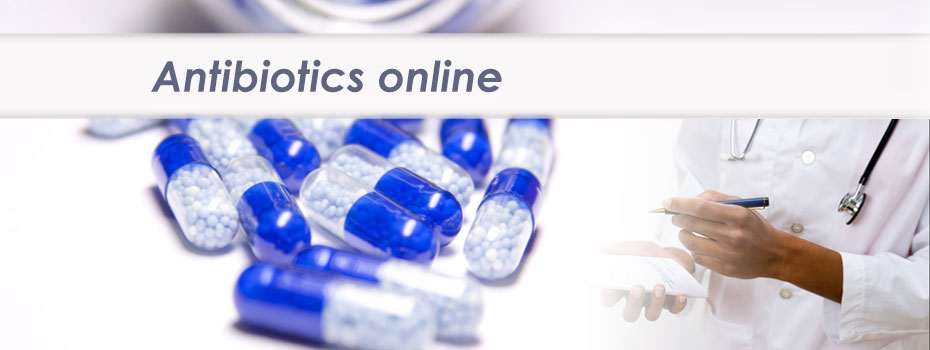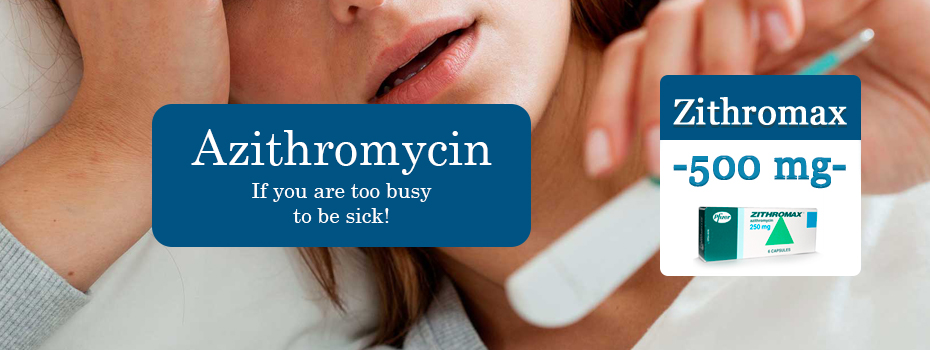The main groups of antibiotics
Antibiotics it is group of the natural or semisynthetic organic substances, capable to destroy microbes or to suppress their reproduction. At present the set of various kinds of the antibiotics allocated with various properties is known. The knowledge of these properties is a basis of correct treatment by antibiotics. Individual qualities and antibiotic action mainly depends on its chemical structure. In this article we will tell about the most known groups antibiotics, we will show the mechanism of their work, a spectrum of action, possibility of application for treatment of various infections.
Groups of antibiotics
Antibiotics it is substances of a natural or semisynthetic origin. Receive antibiotics by extraction them from colonies of fungi, bacteria, fabrics of plants or animals. In certain cases an initial molecule subject to additional chemical updatings on purpose to improve certain properties of an antibiotic (semisynthetic antibiotics).
At present there is a huge number of every possible antibiotics. However, in medicine it is used only few of them, others, because of the raised toxicity, can't be used for treatment of infectious diseases at people. An extreme variety of antibiotics has served as the reason of creation of classification and division of antibiotics into groups. Thus in group antibiotics with similar chemical structure (occurring of the same molecule of raw materials) and action are collected.
More low we will consider the basic groups of known antibiotics for today:
Beta-lactam antibiotics
The group a beta-lactam of antibiotics includes two big subgroups of the famous antibiotics: penicillin and cephalosporins, having similar chemical structure.
Group of penicillin
Penicillin turns out from colonies mold fungus Penicillium whence there is a name of this group of antibiotics. The basic action of penicillin is connected with their ability to oppress formation of a cellular wall of bacteria and by that to suppress their growth and reproduction. In active reproduction many kinds of bacteria are very sensitive in relation to penicillin and consequently action of penicillin the bactericidal.
Important and useful property of penicillin is their ability to get in cages of our organism. This property of penicillin allows to treat the infectious diseases which activator "hides" in cages of our organism (for example, a gonorrhoea). Antibiotics from penicillin group possess the raised selectivity and consequently practically don't influence a human body, accepting treatment.
It is possible to carry their fast deducing from an organism and development of resistance of bacteria to lacks of penicillin in relation to this class of antibiotics.
Biosynthetic penicillin receives directly from colonies mold fungi. These antibiotics use for treatment of quinsy, a scarlet fever, a pneumonia, wound infections, a gonorrhoea, a syphilis.
Semisynthetic penicillin turns out on the basis of biosynthetic penicillin of ways of joining of various chemical groups. At present there is a considerable quantity semisynthetic penicillin: amoxicillin, ampicillin, carbenicillin, azlocillin.
Important advantage of some antibiotics from group of semisynthetic penicillin is their activity in relation to bacteria (the bacteria destroying biosynthetic penicillin). Thanks to it semisynthetic penicillin possesses wider spectrum of action and consequently can be used in treatment of the diversified bacterial infections.
The basic collateral reactions connected with application of penicillin have allergic character and sometimes are at the bottom of refusal of use of these preparations.
Group cephalosporin
Cephalosporin also concern group a beta-laktamnyh of antibiotics and possess the structure similar to structure of penicillin. For this reason some by-effects of their two groups of antibiotics coincide (allergy).
Cephalosporin possess high activity in relation to a wide spectrum of various microbes and consequently are used in treatment of many infectious diseases. Important advantage of antibiotics from group cephalosporin is their activity in relation to microbes steady against action of penicillin.
There are some generations cephalosporin:
Cephalosporin I generations (Tsefalotin, Tsefaleksin, Tsefazolin) are active under the relation of a considerable quantity of bacteria and are used for treatment of various infections of respiratory ways, urinary systems, for preventive maintenance of postoperational complications. Antibiotics of this group, as a rule, are well transferred and don't cause serious collateral reactions.
Cephalosporin II generations (Tsefomandol, Tsefuroksim) possess high activity in relation to the bacteria occupying a gastroenteric path and consequently can be used for treatment of various intestinal infections. Also these antibiotics are used for treatment of infections respiratory and biliary ways. The basic collateral reactions are connected with occurrence of an allergy and infringements of work of a gastroenteric path.
Cephalosporin III generations (Tsefoperazon, Tsefotaksim, Tseftriakson) the new preparations possessing high activity in relation to a wide spectrum of bacteria. Advantage of these preparations is their activity in relation to bacteria tolerant to action of others cephalosporin or penicillin and ability of a long delay in an organism. Use these antibiotics for treatment of heavy infections not giving in to treatment by other antibiotics. By-effects of this group of antibiotics are connected with infringement of structure of microflora of intestines or occurrence of allergic reactions.
Antibiotics from group of macroleads
Macroleads it is group of antibiotics with difficult cyclic structure. The most known representatives of antibiotics from group of macroleads it is Erythromycin, Azitromitsin, Roksitromitsin.
Action of antibiotics of macroleads on a bacterium bacteriostatic – antibiotics block the structures of bacteria synthesizing of the squirrel therefore microbes lose ability to breed and grow.
Macroleads are active under the relation to many bacteria, however the most remarkable property of macroleads their ability to get in cages of our organism, perhaps, is and to destroy the microbes which do not have a cellular wall. Such microbes concern chlamydia – activators of an atypical pneumonia, urogenital a clamidiosis and other illnesses resistant to treatment by other antibiotics.
Other important feature of macroleads is their relative safety and possibility of carrying out of long treatment though modern programs of treatment with use of macroleads provide ultrashort courses lasting three days.
The basic directions of use of macroleads it is treatments of the infections caused by endocellular parasites, treatment of patients with an allergy to penicillin and cephalosporin, treatment of children of early age, pregnant women and feeding mothers.
Antibiotics from group tetracyclines
The most known antibiotics from group tetracyclines are tetracycline, doxycycline. Action of antibiotics from group tetracyclines bacteriostatic. Also as well as macroleads tetracyclines are capable to block synthesis of proteins in cages of bacteria, however, unlike macroleads, tetracyclines possess smaller selectivity and consequently in the big doses or at long treatment can brake synthesis of proteins in human body cages. At the same time tetracyclines remain irreplaceable "assistants" in treatment of many infections. The basic directions of use of antibiotics from group tetracyclines this treatment of infections respiratory and urinary ways, treatment of heavy infections of type of the Siberian ulcer, tularemia, a brucellosis and so forth
Despite relative safety, at long use tetracyclines occurrence of heavy by-effects can cause: a hepatitis, defeat of a skeleton and teeth (tetracyclines are counter-indicative to children till 14 years), developmental anomalies (contra-indication for use during pregnancy), an allergy.
Wide application was received by ointments containing tetracyclines. Apply to local treatment of bacterial infections of a skin and mucous membranes.
Antibiotics from group aminoglycosides.
Aminoglycosides it is group of antibiotics which such preparations as Gentamycin, Monomitsin, Streptomycin, Neomycinum concern. The action spectrum aminoglycosides is extremely wide and includes even activators of a tuberculosis (Streptomycin).
Aminoglycosides are used for treatment of the heavy infectious processes connected with massive distribution of an infection: a sepsis (blood poisoning), peritonitises. Also Aminoglikozidy are used for local treatment of wounds and burns.
The basic lack aminoglycosides is their high toxicity. Antibiotics from this group possess defeat of kidneys, liver defeat, can cause deafness. For this reason aminoglycosides should be used only under vital indications when are unique possibility of treatment and can't be replaced by other preparations.
Chloramphenicol
Chloramphenicol oppresses synthesis of bacterial proteins, and in the big doses causes bactericidal effect. Chloramphenicol possesses a wide spectrum of action, however its use is limited because of risk of development of serious complications. The greatest danger connected with use of an antibiotic of Hloramfenikola consists in defeat of the marrow developing blood cells.
Antifungal antibiotics
Antifungal antibiotics it is group of the chemical substances, capable to destroy a membrane of cages of microscopic fungi, causing their destruction.
Use of these preparations is presently considerably limited in connection with small efficiency and high frequency of occurrence of by-effects. Antifungal antibiotics are gradually forced out by highly effective synthetic antifungal preparations.
What you should know about antibioticsBroad spectrum antibioticsHistory of the genetically modified organisms and products










